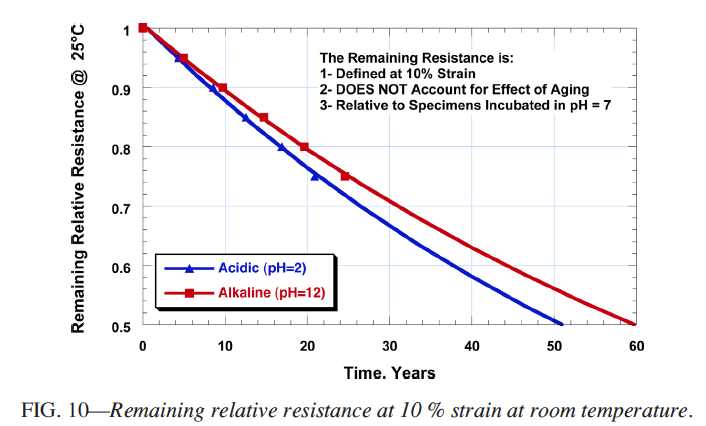Sustainable Piling: Durability

Durability of Recycled Polymeric Piling
The degradation of polymeric materials buried in soils is an important concern due to their lack of a longterm track record. Environmental conditions that contribute to chemical degradation in polymeric materials include elevated temperature; UV radiation; and exposure to oxygen, moisture, and acidic or basic environments. Virtually no information related to the durability of plastics in waterfront environments isavailable. However, Salman identified the main mechanisms that degrade polymers as either hydrolysis for polyester-based materials or thermo-oxidation for polyolefin-based materials.

Iskander and Hassan carried out a one-year accelerated degradation program of Seapile reinforced plastic piling made of recycled HDPE. The program involved the high-temperature incubation of coupon specimens in aqueous solutions having pH values ranging from 2 to 12. Unconfined compression was used as an index, and approximately 700 compression tests were performed.
An estimated 25% loss in resistance at 10 % strain is projected to take 21 years for coupon specimens incubated in an acidic environment (pH=2)and 25 years for coupon specimens incubated alkaline environment (pH=2). If the reaction rates remain constant, 50 to 60 years are required for a 50 % loss in the relative compressive strength of coupon specimens under the same conditions. These results represent a lower bound because the study was conducted on coupon specimens that were exposed to aggressive media at the surface. Piling is typically 25 to 40 times larger in diameter than the tested specimens and is therefore likely to have a slower rate of degradation.
